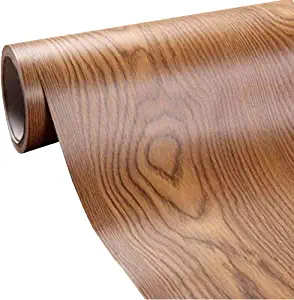If you are thinking of applying contact paper to your cabinets, there are a few things you should think about first. Here are ten things to consider before making your cabinet contact paper decision:
#1 What finish do you want?
If you currently have a glossy finish on your cabinets, you may want to consider replacing the finish before applying the contact paper. Glossy finishes are notoriously difficult to clean and can potentially trap dirt and debris on the surface, which can cause discoloration over time. If you do not want to replace the finish, apply the contact paper to the cabinets and wait until it dries completely before cleaning the surface.
#2 Have you measured the surface area you want to cover?
Before you go and purchase the contact paper, make sure you measure the surface area of the cabinets. This will help you determine how much contact paper you will need for the project. Once you have determined how much contact paper you need, you should purchase the paper from a local home improvement store or online. You will want to make sure that you buy enough contact paper to cover all of the cabinets so you do not have leftover pieces after the job has been completed.
#3 What is the material used for the top of the cabinets?
The top of the cabinets may not be made of the same material as the rest of the cabinets. If this is the case, you will need to remove the top from the cabinets so that you can access the underneath portion of the cabinet. Next, you will want to clean the top so that it matches the underneath portion. This will ensure that the contact paper does not need to be removed at a later date. This will save you a great deal of time and frustration in the long run.
#4 Is there a finish that will match the existing finish on the cabinets?
When trying to match the existing finish on your cabinets, you must be careful about the type of contact paper you purchase. Not all contact paper is created equal, so be sure to read the label and pay attention to the ingredients used to make the product. You should also check the manufacturer’s website to see if the material is ADA-compliant. This will allow you to determine if the contact paper meets all the project requirements.
#5 Do you plan on painting the cabinets a different color?
If you plan to paint the cabinets a different color, you should wait until the project is complete to do so. This will help ensure the contact paper does not need to be removed in the future. It will also ensure that the cabinets are finished to your liking and match your décor.
#6 Are you dealing with a stain problem?
If the cabinets have a stain or spill, you must clean them thoroughly before applying the contact paper. Typically, you should wipe down the surface with a damp cloth to remove any dirt or dust on the surface. Once the surface has been cleaned, you can apply the contact paper directly to the surface. If the cabinet has a sticky residue that is more difficult to remove, you may need to apply some oil to the surface before placing the contact paper onto the surface.
#7 What kind of glue are you planning on using?
Your options for gluing the contact paper to the cabinets will depend on the type of surface you are working with. If you apply the contact paper to a wooden surface, you can use a hot glue gun to secure the paper. If you are applying the contact paper to a painted surface, you can use a liquid nail solution to secure the paper to the cabinet. This will give your finished product a polished look that is appealing to the eye.
Conclusion
Contact paper is a great option when it comes to completing small projects around the home. If done correctly, it can provide a smooth and polished look that will help you complete your project easily. It is easy to apply and remove, making it a versatile product that can be used on a variety of surfaces throughout the home. Now that you know how to use contact paper properly, you can make your next home improvement project much easier to complete.

